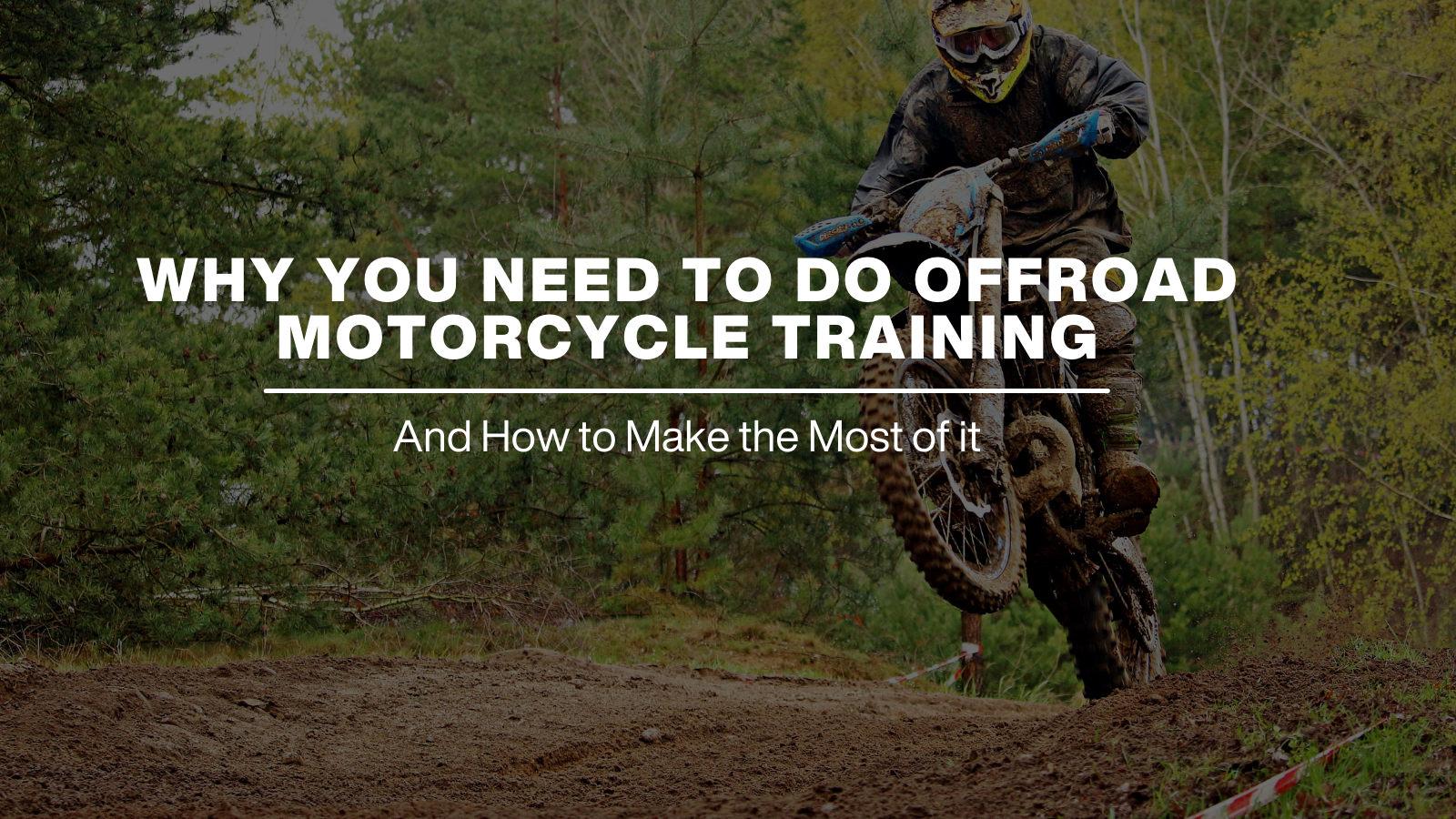BY Gabe Ets-Hokin
Five ways to get better off the pavement. . .
Fall is here, and the changing seasons can mean lots of rain and muddy trails in the woods. And if you're an off-road rider, that means lots of dirty, gooey fun. If that's you, why are you reading this? Gas up your bike and get going.
If that's not you, read on for some ideas and pointers on getting out there in the dirt. Why? Because not only is riding off road a ridiculous amount of fun, it's an amazing training tool for street riders. You'll learn how to be comfortable when the pavement is wet and slippery, or when a tire (or two) starts to spin up and get away from you. It's also a great family sport, a way to get out there and ride with the whole family, from ages three (really!) and up. And it's not just trail riding or motocross tracks we're talking about—there's trials riding, dirt-track racing, adventure touring...off-road motorcycles can go practically anywhere and do most anything.
Train!
Never ridden off road? Take a class if you can. Riding on dirt is a very different experience from pavement riding, though it also shares a lot of skills and aspects. For instance, throttle and brake control can be sloppier in some situations but require more finesse in others. And you can steer the bike through sliding it, not something you should make a habit of on the street.
Some recommended dirt-riding schools:
Factory MX School - Temecula California | Motocross Training | Vacation
Welcome to Rich Oliver's Mystery School
Get the Gear!
We're always ready to talk gear, but dirtbike gear is different from street-riding gear. Crashes happen more frequently, but at lower speeds. Terrain can be muddy, wooded, dusty or even underwater. Dirt, rocks and other debris can be thrown up by other riders or your own wheels, and all these factors mean that street-riding equipment will soon look like it was thrown off a bridge and then run over by a gravel truck.
Luckily, all this stuff can be found on sale or used relatively inexpensively and it improves the dirt-riding experience tremendously. And of course, you already have your EarPeace earplugs, which are unmatched in comfort and protection.

Get a Bike!
Obviously, you'll need an off-road capable bike, but what kind? Like any motorcycle purchase, you have to first ask what you'll do with it. Here are some types of off-road machines to help you decide.
- Motocross: The rocketship of dirtbikes, a motocrosser is built to win races on a motocross track. It's built with the best power-to-weight ratio, brakes and suspension and is available in sizes from 65cc to 500cc, usually equipped using both two-stroke and four-stroke single-cylinder engines.
- Enduro or Trail bike:
- also built for competition, but these bikes are better suited to all kinds of terrain as well as longer-distance, high-speed riding (think bombing across the open desert). Also in different displacements from 65-650cc or more, except the motors are tuned for better low-RPM response for less shifting and better fuel economy. They have bigger gas tanks and mosre comfortable seats, and may even have lights for nighttime fun.
- Play bike: These are lower-tech, lower-power, less-sophisticated bikes designed for non-competitive messing about. They'll frequently be older designs and are usually a lot less money, with simple, reliable motors and few high-tech frills. They come in all sizes so the whole family can ride together.
- Youth: The major manufacturers make all the above bikes in youth sizes, with smaller wheels and motors so kids as young as three can get an early start on two wheels. The “pee-wee” models start at 50cc and are so small and light they can be tossed into the trunk of a car. Tykes can twist and go as the entry-level models use a centrifugal clutch—no shifting required.
- Dual-Sport: These are closest to Enduro models, but they have all the necessary emissions, signaling and safety equipment you need to get a license plate and ride on public roads, both paved and unpaved. That means the bikes will be heavier and generally more comfortable, with bigger gas tanks and tires desiged to grip on pavement (at the cost of less grip off road). Some of these can be 600-pound, 160-hp “Adventure Tourers” that will punch a $20,000 hole in your IRA, but most are affordable, dependable middleweight single-cylinder jobs that are as happy riding through Mongolia as they are commuting to work.
Get a Friend!
Dirt riding is fun, but it's physically very demanding, especially compared to an hour's street ride on a winding country road. That's why you should go with a friend. Not only is it more fun, you can share expenses like gas and food, if anything goes wrong (and it will) you'll have an extra set of hands to help.
Ride!
This is obvious, but there are many garages housing dusty dirt bikes that haven't felt mud on their tires for years, ridden a few times and then forgotten. Dirt riding is a serious hobby that demands commitment if you want to be safe, fast and capable off road. Do you have time to ride? Do you have a way of getting you and your bike to a riding area? Do you have buddies that'll tag along? If you're yelling “yes,” get out there and go! Make sure you grab two sets of EARPEACE motorcycle earplugs. Hearing protection is an important part of motorcycle training and earplugs should always be in your motorcycle gear stash.




Share:
NO BULLSHIT ADVICE ON HOW TO CHOOSE YOUR FIRST MOTORCYCLE
THE MUSIC THAT GOT ME THROUGH IT: A VETERAN'S MUSIC THERAPY